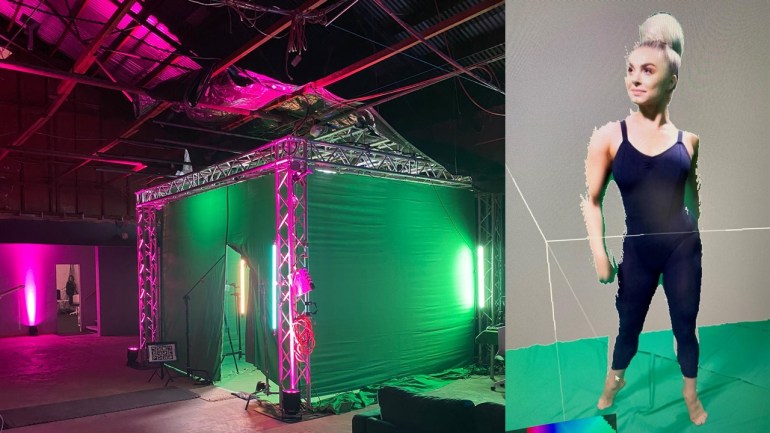Melbourne’s Swinburne University of Technology has entered into a partnership with immersive media company Imagine Room to build and operate a volumetric capture studio facility, which will also be available for industry use.
Set to open from September, it will be Imagine Room’s second such stage in Australia, the other being at Light in Adelaide, which launched in May.
The company also has growth ambitions to build stages in Sydney and the Gold Coast, and expand into Asia.
Imagine Room co-founder Paul Willey tells IF Swinburne makes the perfect partner for its Melbourne arm as the uni brings research capacity as well as resources via its existing motion capture and human performance site.
The volumetric capture stage, to be situated in Swinburne’s Centre for Transformative Media Technologies, will be used for research into virtual world content production, digital human double, CX, UI/UX and post production workflows, as well as human biometrics, performance and assisted technology design in the disability sector.
“In general terms, Imagine Room places a lot of value in R&D, with current VolCap pipelines and work-flows being so new – but also in the training of the next generation of content creators, regardless of sector,” Willey says.
Commercial production will be able to utilise the space, with Willey reporting Imagine Room is fielding significant demand from filmmakers for volumetric capture facilities, in order to record human and objects three-dimensionally in real-time.
This is particularly so in virtual production and VFX environments, where 2D human digital doubles are being replaced by 3D VolCap performances that can be placed in any position within the plane.
“If you believe, to any extent, in a future where computing is ‘spatial,’ or one where VR, AR, and MR and immerisve games will continue to scale, the need for accurate human representation in these virtual environments is clear,” he says.
As WIlley sees it, volumetric capture is progressing quickly, with an increasing number of players offering solutions in terms of capture, post, platform and syndication of human assets.
“This differentiates metahumans from avatars – from motion capture to character animation. All have a role to play, especially as the value and flexibility of real-time and interactive environments cross non-gaming sectors,” he says.
“However, there is a balance to be found between what is technically and creatively achievable, with what is commercially viable in each market. Imagine Room’s aim is to offer the Australian market VolCap solutions and services that democratise access to this new kind of content creation, so that filmmakers and storytellers can push boundaries and explore new immersive mediums.”
The Imagine Room and Swinburne partnership will also include a training and mentorship program for students looking to build careers in immersive media, interactive arts and virtual content production.
Swinburne director of the Centre for Transformative Media Technologies Professor Kim Vincss says: “This partnership sets the agenda for research into all forms of virtual presence. We are excited to be working with Imagine Room to bring people and technology together – literally – to provide transformative solutions for industry.”



